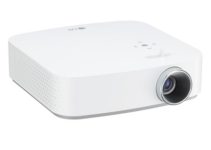The convex lens is a type of lens that is used in projectors. It is an important component because it allows the projector to produce images by focusing light onto a surface. The image can then be projected on walls and screens for people to see. A convex lens works by bending rays of incident light inward, toward its focal point (the center).
Although this article focuses on why projectors use convex lenses, there are many other uses for them! You might find one in your car’s headlights or even in your glasses if you wear them while driving at night.
How does a Convex Lens in a Projector Work

A convex lens is thicker in the middle than at the edges. It focuses light, so why isn’t it used to focus images too? An object’s image can be focused using a concave or convex lens if it falls on that type of surface. The distance between an object and its focal point depends upon where you place your lens. Think of a magnifying glass in the sun at noon; it will focus properly because each point on the object is equidistant to its focal point (focal length). If you were to place your lens closer or farther from this object, then that image would be out of focus.
In an overhead projector, why does a convex lens focus the image onto a screen? The beam of light from the projector is not parallel, so it can’t be focused like you would with a magnifying glass. A concave or convex surface could only do this if all points on an object were exactly the same distance to its focal point; something that’s impossible for most objects we see. The lens in an overhead projector is flat, so why does it focus an image onto the screen? It’s because of a special effect called ‘total internal reflection’.
All light has some degree of reflectivity; most surfaces will reflect back about 90% of the incoming light at each point on its surface. By total internal reflection, we mean that all of the light is reflected back at its point of contact with the surface. This happens when a beam of light strikes water or glass and it enters into these substances instead of passing through them.
Because an overhead projector’s lens is made out of transparent material, why does it work? It causes total internal reflection to occur for any beams of light that strike its surface. As the beam bounces around inside the lens, it is focused onto a point on the screen below. The lens’ flat shape means that all of these beams will be parallel to each other and they’ll come together at one focal length away from the projector’s lens (on the opposite side of its curved face).
Why Do Video Projectors use Convex Lenses
In the same way as overhead projectors, video projectors use a lens to focus their light onto a screen. However, why do they need convex lenses? Video projectors have a similar construction to that of an overhead projector – one big difference is that there’s no surface below them where you would expect an image to be projected from.
The lenses in video projectors are convex, so why do they have to be? This is because all beams of light will reflect off the projector’s surface at a parallel angle. If this were not the case, then different colors would converge onto different points on the screen instead of one common focal point. By using a convex lens, projectors can compensate for this and focus all of the light at one focal point.
This is why video projectors use convex lenses, which are thicker in the middle than around their edges – they have to be able to converge on a single focal point that’s close enough so that people watching from below will see it clearly without any trouble.
Where else is Convex Lens Used

A convex lens is used in a number of other applications as well. Many telescopes and binoculars use them because they’re able to collect more light than concave lenses can, so the images produced are brighter and clearer on average. They also help with reducing chromatic aberration (distortion caused by different colors focusing on different points).
In car headlights, why do convex lenses focus the light better? A concave lens would create a very narrow beam of light that isn’t practical for driving – a large area needs to be illuminated so other drivers can see you. Think about how visibility is affected during foggy weather and you’ll understand why all vehicle headlamps have convex lenses too.
Convex lenses are also used in traffic signals, where they’re known as signal lights or signal mirrors (as well as their corresponding housing unit). In order for these devices to work properly, each color must be visible from every angle since cars travel at different heights on roads with curves or hills. Once again this means that total internal reflection occurs within the lens’ surfaces.
Convex lens is used in a lot of different areas, why do you think that they’re so popular? They work by focusing light onto a single point and then collecting it to form an image or signal with high clarity. This makes them extremely useful for many tasks across several industries.






